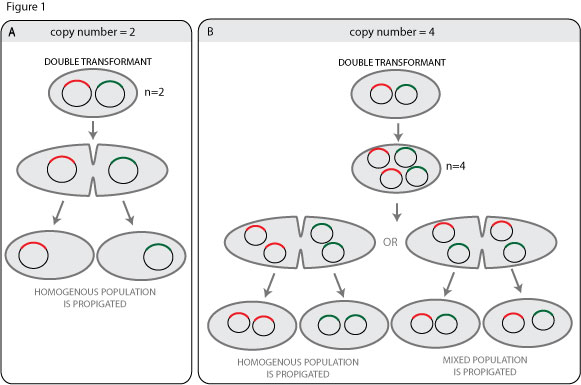The most comprehensive way to evaluate DNA concentration and purity is to use both UV spectrophotometeric measurements and agarose gel eletrophoresis. This quick reference guide gives an overview of the information that can be derived from both.
UV spectrophotometric measurement of DNA concentration and purity
DNA itself, and most of the common contaminants found in DNA preps, have absorbances in the region 230nm to 320nm so measurement of the absorbances in this region allows measurement of the DNA concentration and provides information about the contaminant levels. The measurements can be performed on a conventional spectrophotometer, or on one made specifically for biomolecule analysis, such as Eppendorf’s Biophotometer. However the measurement is performed, the most important wavelengths to note are:
- 230nm: Guanidinium salts (used to facilitate DNA binding to silica columns) and phenol (used in phenol/chloroform extractions) absorb strongly at 230nm, therefore high absorbances at this wavelength can be indicative of carry-over of either of these compounds into the sample.
- 260nm: DNA absorbs light most strongly at 260nm so the absorbance value at this wavelength (called A260) can be used to estimate the DNA concentration using the equation below derived from Beer’s Law .
Concentration (µg/ml) = (A260 reading – A320 reading) x 50
- 280nm: Since tyrosine and tryptophan residues absorb strongly at this wavelength, the absorbance at 280nm is used as an indicator of protein contamination.
- 320nm: A320 provides a general measurement of the turbidity of the sample and is normally subtracted from the A260 value as a background reading for the calculation of DNA concentration, but excessive values may indicate non-specific contamination.
A good quality DNA sample should have a A260/A280 ratio of 1.7-2.0 and an A260/A230 ratio of greater than 1.5, but since the sensitivity of different techniques to these contaminants varies, these values should only be taken as a guide to the purity of your sample. For an accurate measurement, the A260 value must lie between 0.1 and 1, so dilution of concentrated samples may be required.
Measurement of DNA concentration and purity using agarose gel electrophoresis
A drawback to spectrophotometric measurements is that contaminants such as genomic DNA (a contaminant in plasmid preps), RNA, guanidinium and proteins all display some absorbance at 260nm, so if they are present at high levels in the DNA prep they will contribute to an increased A260 reading and lead to an overestimation of the DNA concentration. Agarose gel electrophoresis, using a quantitative dye such as ethidium bromide, can be used an an alternative approach to measure sample DNA concentration with is not affected by these contaminants. The DNA concentration of a sample can be roughly calculated by comparison of the sample band intensity with that of a molecular weight marker band whose DNA content is known.
Contaminating RNA or genomic DNA can be detected on an agarose gel, since RNA will run as a low molecular weight smear and genomic DNA as a high molecular band. In addition, an important indication of the quality of plasmid DNA prepared by alkaline lysis (e.g. mini/midi preps) can be obtained since permanent denaturation of the DNA caused by over-incubation in lysis buffer is indicated by a slower than expected migration on an agarose gel.
Want on-hand formulae for calculating DNA concentration in the lab? Download our free lab math cheat sheet for a handy formula and lots of helpful calculations.
Originally published on August 22, 2007. Updated and revised on July 28, 2015.







